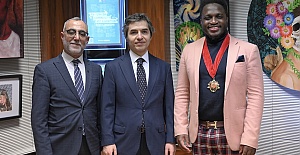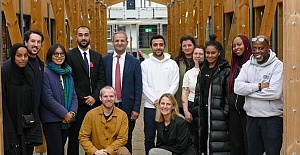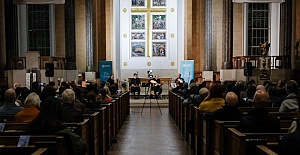The Oxford English dictionary defines the noun 'settlement' as 'an official agreement intended to resolve a dispute or conflict': However there is also a mass-noun which describes the 'subsidence of the ground or a structure built on it' as a 'settlement. It has taken some considerable time for the respective parties to clear the ground even for talks to begin upon establishing a foundation for the structure of an agreement on the decades old Cyprus Problem but there is still a great deal of doubt as to the integrity not only of the prepared ground but also the component parts of the intended structure. External elements too, will test all aspects of the construction process, not all of which will be well-intentioned. This article therefore surveys the planning and preparation from a sceptical standpoint as always, for the purpose of inducing debate and closer scrutiny.
There are two critical key components to the Cyprus Structure namely the Turkish Cypriot and Greek Cypriot peoples who, for countless decades extending way before the 1974 watershed that the outside world are persuaded to acknowledge as the genesis of the whole Cyprus Problem. The reality is very different indeed as the entire matter has its roots as far back as 1879 when the Orthodox Church organised a selective petition which demanded of the then new British Administrators, Enosis with Greece. From 1931 onwards, the Greek Cypriots in general have striven initially to wrest the island from Britain and from mid-1963 onwards and, at the continued behest of the leadership of the Orthodox Church, the thrust then was to purge the entire island of Turkish Cypriots by all forceable means (Akritas Plan). Against this backdrop, Turkish Cypriots also organised themselves in order to establish a territorial homeland for themselves as a separate entity also known as Taksim. In fact, an agreement had been reached to establish precisely that way before the Turkish Intervention but this was vetoed by Archbishop Makarios.
The prospects however for a workable settlement began over a year ago following the election of Nikos Anastasiadis, a pro-solution liberal as president of south Cyprus. He was one of the very few pro-Annan Plan advocates and has always made clear, his intentions to resume reunification talks with new ideas and parameters which includes applying for NATO membership. Such a move would constitute a major development in as much as it would represent a marked sea-change to the traditionally non-aligned policy of of Cyprus and will involve engagement not only with NATO member Turkey but also the UK and Greece all of whom happen to be Guarantor Powers of the Treaty of the Republic of Cyprus. Strategically, it is thought that this proposal if adopted would offer a viable solution to the issue of “third party guarantees on security for the two constituent communities of the island. Anastasiadis' election has triggered a positive development in the north with the arrival of the pro-solution Republican Turkish Party to the government. Two new elements of a structural nature are also highly relevant: The arrival during 2014 of from mainland Turkey with a capacity to meet the fresh water requirements of the entire island and the discovery of significant natural gas reserves in the territorial waters of the south and energy-hungry Turkey have a clear interest here too.
The Turkish Cypriot element of the structural blueprint have good reason to be sceptical over any deal which has the effect of unifying the island under a Greek Cypriot majority political arrangement. They (the Turkish Cypriots) rightly demand to be treated as political equals as an essential requirement and a just demand,but when Archbishop Christosomos refers to TC's as that 'awful minority' what chance of equality do you have!?'' As a young Turkish Cypriot woman commented to this columnist recently and as follows: “As the young generation of Cyprus, we all need and hope to be treated as equal and fair. I do not want to hear any more emigration, young friends leaving the island because of unemployment and bad economic conditions but more investment in the island and good economic conditions. I believe this can be achieved with a true and fair plan but I would like to add to your points: peace at any acceptable/reasonable cost and at any feasible price.” The latter comment being related to the writers suggestion that for Turkish Cypriots, the imperative must be peace at all costs, but not at any price.
Clause 5 of the Joint Statement reads as follows: The negotiations are based on the principle that nothing is agreed until everything is agreed. And therein lies the beginning and the end of the problem for as with all things, the devil will be in the detail. There is the property question to be answered but also other things of great importance to both sides; for example, will the Greeks demand the erasing of the 200,000 square metre flag on the southern escarpment of the Beşparmak Mountains and quid pro quo, will Turkish Cypriots require the removal of memorials to EOKA or other such edifices? Then there are such crucial issues such as the Greek's demand for the unconditional return of Varosha and Famagusta ahead of any agreement together with unfettered access to ports. Such demands and requirements are all likely to poison the chalice of reconciliation at an early stage. These and myriad other matters are of at least symbolic importance to both communties and accommodations will need to be made. Will the graves of the fallen of both sides be respected? This is another question.
The United Nations have occupied the role of the architect for a structure of peace on Cyprus for 50 years and have achieved little barring lines on drawings. Now, the USA seem to have wrested control of the works but in pursuit only of their own regional interests whilst the UK will largely do as she is told by the latter. If the fabric of the structure is to be agreed during the coming months, it is essential that the foundation works are found to be sound but it is this columns opinion that it will be a long time before the roof goes onto this structure underwhich it will be safe for both sides to dwell peacefully.


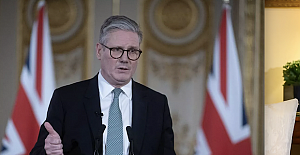 Prime Minister Keir Starmer's 2025 Easter message
Prime Minister Keir Starmer's 2025 Easter message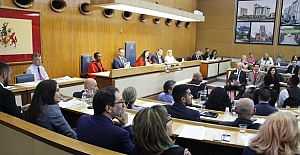 After Nesil Caliskan a by-election will be held in Jubilee ward in Enfield
After Nesil Caliskan a by-election will be held in Jubilee ward in Enfield Publishing the analysis, Labour’s Cllr Ergin Erbil said Everybody in Enfield deserves basic rights
Publishing the analysis, Labour’s Cllr Ergin Erbil said Everybody in Enfield deserves basic rights Gaza-Israel conflict Statement from Cllr Ergin Erbil, Leader of Enfield Council
Gaza-Israel conflict Statement from Cllr Ergin Erbil, Leader of Enfield Council The European Union called on Turkey to uphold democratic values
The European Union called on Turkey to uphold democratic values Turkish citizens in London said Rights, Law, Justice
Turkish citizens in London said Rights, Law, Justice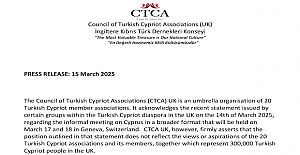 The Council of Turkish Cypriot Associations Geneva response letter
The Council of Turkish Cypriot Associations Geneva response letter Sustainable Development and ESG, Will This Become the Course for Turkic World
Sustainable Development and ESG, Will This Become the Course for Turkic World The 'Prince of Paris' has impressed in his first EuroLeague season
The 'Prince of Paris' has impressed in his first EuroLeague season Saran Media And Euroleague Basketball Extend Media Rights Partnership for Four More Years
Saran Media And Euroleague Basketball Extend Media Rights Partnership for Four More Years Will Rangers be Jose Mourinho’s next victim?
Will Rangers be Jose Mourinho’s next victim? Jose Mourinho's Fenerbahce face Rangers on Thursday
Jose Mourinho's Fenerbahce face Rangers on Thursday Barclays has become the biggest UK lender so far to cut mortgage rates
Barclays has become the biggest UK lender so far to cut mortgage rates THE SPRING STATEMENT EXPLAINED, UK ECONOMIC OUTLOOK AND GROWTH FORECASTS
THE SPRING STATEMENT EXPLAINED, UK ECONOMIC OUTLOOK AND GROWTH FORECASTS Launch of Made in Enfield gift shop to celebrate local artists and designers
Launch of Made in Enfield gift shop to celebrate local artists and designers Trial used smart Wi-Fi sensors for live building occupancy data to optimise
Trial used smart Wi-Fi sensors for live building occupancy data to optimise








